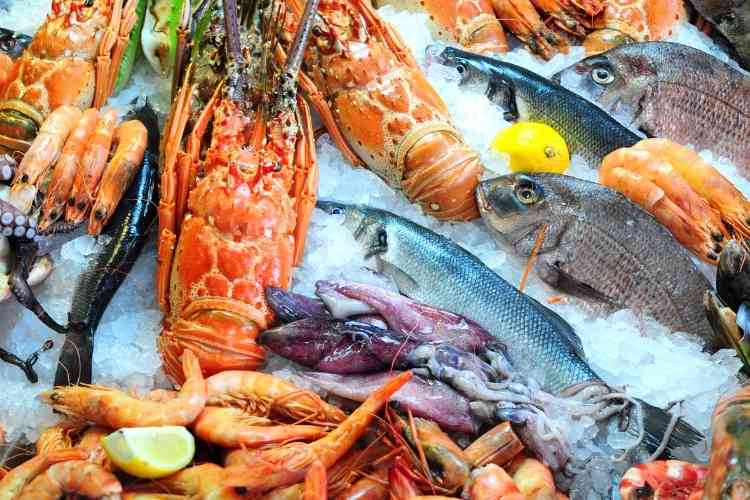The procedure of converting or making ready seafood into an eatable form is known as seafood processing. In simpler terms, it includes all the steps from catching the fish or other aquatic animals to being a marketable product for eating. Generally, in seafood processing, all the tasks related to the hygiene of seafood products are done till they are ready as food to eat. Seafood processing is a complex and difficult task. Seafood only includes fish or other water vertebrates. It does not include mammals, reptiles, amphibians, etc. This article provides a general overview of the basic understanding and workings of seafood processing.
Subdivision of work in seafood processing
Seafood processing is a complex task and it requires certain actions to be performed. It is to be correctly stated that fish is a perishable product, so one of the major concerns of the seafood processing industries is the appropriate and hygienic storage of the fish products during processing. Fish products are channelized to grocery stores or the open market through the food processing industries. Fish handling and management is the main task of seafood processing industries because, in this process, raw fish has to be stored and the work of manufacturing starts in this action. After that, some fish are frozen through the mechanism and later on distributed to grocery and retail markets for further uses like consumption, etc. For more information visit the seafood processing.
Functions of the seafood processing industry
Receiving aquatic vertebrates such as fish, for example, is part of the seafood processing process. It also includes functions like skinning, gilling, salting, smoking, canning, washing, chilling, gutting, shucking, etc. Seafood processing industries aid in reducing food waste by relieving pressure on fishing resources and focusing attention on the sustainability of seafood processing. In the process of seafood processing, the by-products of the aquatic vertebrates are used more appropriately and it adds value to the product. Various methods of seafood processing enhance the shell life and also help in the diversification of seafood products across various regions and countries. Seafood processing helps in maintaining the nutritional value of the fish products through appropriate storage. It is a well-established fact that fish products are perishable and if they are not stored appropriately, then it will lead to a deterioration in the quality and nutrients of the fish products. Seafood processing is the appropriate process for waste management of fish and other aquatic vertebrates. For instance, fish products are final after removing fins, tails, etc., and these products are used in fish oil and other valuable products.
Various processes in sea food processing
Seafood processing involves various tasks. The sea food products undergo various processes to be ready to be sold on the market. Different approaches are used in freshwater fishes and other fishes. These are termed manual and automated processes. Manual processing follows the following:
- Sorting: This process primarily involves the classification of fish species and checking for damage and freshness. It is often a manual process.
- Grading: This process is primarily concerned with machinery. Machine graders are appropriate and quickly sort and classify fish. Some recent studies show and prove that automated grading helps in quickly sorting and is around 10 times better than manual sorting, which has some discrepancies.
- Scaling: scaling is a process that is manually performed and is characterized as the most difficult task in seafood processing. The rationale behind scales is that they are very difficult to remove and replace. Employees and other workers may scale fish with the help of a hard brush or blade. It is to be noted that fish that are to be skinned or smoked do not need to be scaled. With the advent of electric scalers, the task is simplified and easier to perform in action.
- De heading: Thisprocess involves the removal of the heads of fish to be ready to eat. It is to be noted that freshwater fish can be de-headed manually or by an automated machine. Generally, saltwater fish are de-headed with the help of an automated machine. Manually de-heading large fish requires a lot of resources, time, and effort, whereas an automated de-heading machine should be used to reduce the time and effort in de-heading. In the process of de-heading, automated machines generally use band saw blades, cylindrical knives, or guillotine cutters.
- Gutting: The process of gutting freshwater fish is also often done manually and it requires a lot of labor resources. It primarily includes cutting down the belly of the fish and removing the organs. Vacuum suction equipment is used to separate and detach the entrails. Some plants are used for gutting machines to process certain species of fish. Automated machines provide one solution for various tasks and are utilized for de-heading, cutting, and removing the insides.
- Fin removal: The process of manual fin removal is difficult, especially for large fish. An automated machine consists of rotating disc knives to complete the process.
- Slicing: The process of slicing primarily concerns steaks and is often performed with a band saw. Large fish often need mechanical slicing. There are various types of slicing machines. For instance, some machines use rotating circular circular knives Various studies have evidenced that a cutter can cut up to 40-50 fish in one minute.
- Filleting and skinning: the process of filleting and skinning is concerned with plants that have a filleting machine that uses a rotating disc knife and conveyor belt to speed up the process. An automated tool for skinning consists of an oscillating knife that is powered by a small electric motor.
Conclusion
Seafood processing industries reduce the waste and loss of aquatic vertebrates. It helps in maintaining the appropriate nutritional value and texture of the fish by proper storage in the temperature. Seafood processing includes various tasks like washing, gulling, skinning, salting, smoking, canning, shucking, etc. which improves the quality of fish and other aquatic vertebrates.

